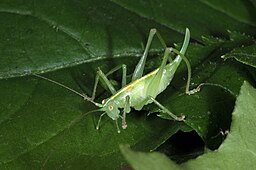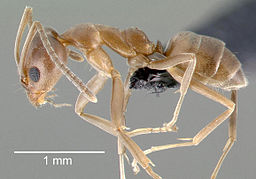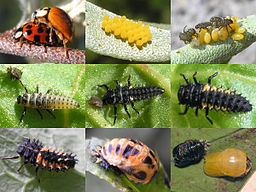 |
Firethorn leaf miner | Status LU: established. 1st record: 1998. |
 |
Feierdar-Minnematt | Status Eur.: established. |
 |
n/a | RA: ISEIA: C3. Harmonia+: n/a. |
 |
n/a | Wikipedia:  | Wikispecies: | Wikispecies: |
 |
Vuurdoornvouwmot | Back to the list of invertebrates |
Contents
Brief description
 Phyllonorycter leucographella (Zeller, 1850) is a moth of the family Gracillariidae. It is native to southern Europe (Mediterranean regions of France, Spain, Greece, Albania, Russia (Crimea), Turkey, and the southern part of former Yugoslavia where its principal host plant is native) and was probably introduced accidentally into several countries in western Europe on transported plant material (Wikipedia contributors 2020).
Phyllonorycter leucographella (Zeller, 1850) is a moth of the family Gracillariidae. It is native to southern Europe (Mediterranean regions of France, Spain, Greece, Albania, Russia (Crimea), Turkey, and the southern part of former Yugoslavia where its principal host plant is native) and was probably introduced accidentally into several countries in western Europe on transported plant material (Wikipedia contributors 2020).
The larvae mainly feed on Pyracantha coccinea, the European species of firethorn, but have also been recorded on Crataegus species.
Status and distribution in Luxembourg
Records of Phyllonorycter leucographella (Zeller, 1850) in Luxembourg. Data source: Recorder-Lux, iNaturalist & GBIF, 2025-12-13.
Phyllonorycter leucographella (Zeller, 1850) was observed in Luxembourg for the first time on 25th April 1998 by Marcel Hellers at the railway station of Ettelbruck (Hellers 2017: 139).
“This species has been introduced with the forage plant. It lives on an ornamental plant, the firethorn, Pyracantha coccinea, on whose leaves the caterpillars lay conspicuous mines. The species can be found everywhere in our villages in gardens and parks around the firethorn. It has already been reported from Luxembourg (Schneider 2006). In Düdelingen, Haard, mines of these caterpillars have been found on Sorbus torminalis, although the service tree, in contrast to the firethorn, has no wintergreen leaves in which the caterpillars of the summer generation of the firethorn leaf miner moth spend the winter (N. Schneider, pers. comm.)” (Hellers 2017: 139).
3 observations are documented in the mdata.mnhn.lu portal (MNHNL, iNaturalist & GBIF, 2021).
Risk assessment
ISEIA protocol
C3 (3+1+1+1) (Ries et al. 2017: 69).
Harmonia+ protocol
Not assessed yet.
Worldwide distribution
Bibliography
- CABI, 2019. Phyllonorycter leucographella (Zeller, 1850). In: Invasive Species Compendium. Wallingford, UK: CAB International. URL: www.cabi.org/isc [accessed 2020-04-10]
- Hellers M., 2017. Die Kleinschmetterlinge Luxemburgs: die Familien Roeslerstammiidae, Douglasiidae, Bucculatricidae und Gracillariidae (Lepidoptera: Gracillariiidea). Bull. Soc. Nat. luxemb. 119: 129-144. [PDF 5,21 MB]
- MNHNL, iNaturalist & GBIF, 2021. MNHNL-mdata, online portal combining species observation from Recorder-Lux, iNaturalist and GBIF. National Museum of Natural History, Luxembourg. URL: https://mdata.mnhn.lu [Accessed 2021-04-14]
- Ries, C., A. Arendt, C. Braunert, S. Christian, A. Dohet, A. Frantz, G. Geimer, M. Hellers, J. A. Massard, X. Mestdagh, R. Proess, N. Schneider & M. Pfeiffenschneider, 2017. Environmental impact assessment and black, watch and alert list classification after the ISEIA Protocol of invertebrates in Luxembourg. Bull. Soc. Nat. luxemb. 119: 63-70. [PDF 360 KB]
- Schneider, N., 2006. Auf Spurensuche. 31. Vor der Haustür. Regulus 6/06: 21.
- Wikipedia contributors, 2020. ‘Phyllonorycter leucographella’, Wikipedia, The Free Encyclopedia, 18 February 2020, 18:54 UTC, https://en.wikipedia.org/w/index.php?title=Phyllonorycter_leucographella&oldid=941462471 [accessed 2020-04-10]
Page content last updated on 2021-04-14. Last proofread by Caroline Grounds on 2019-12-11.






















